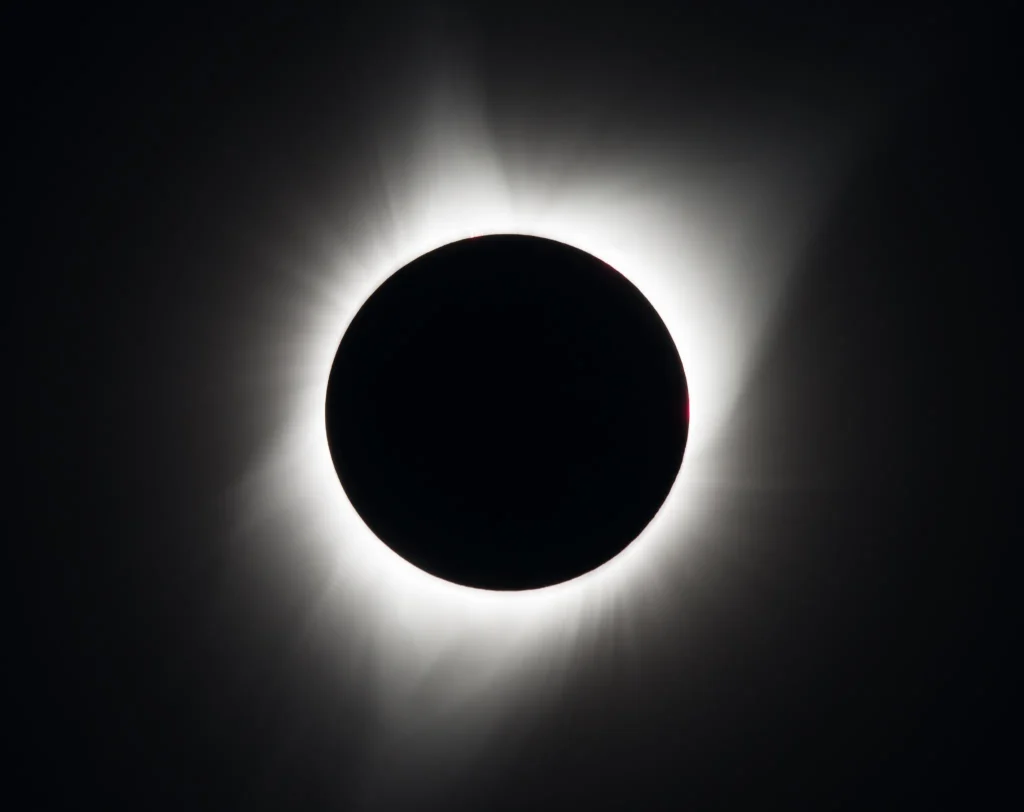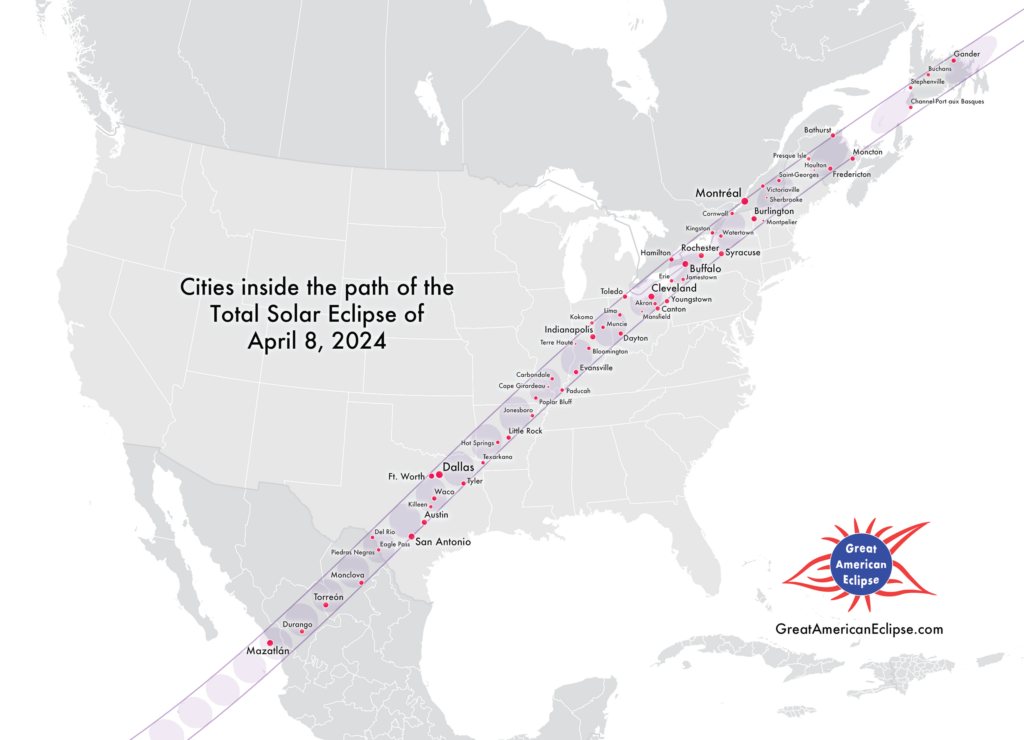On April 8, the inhabitants of the Earth will see the most impressive celestial event of 2024. We are talking about a total solar eclipse, which has already been called the Great North American one.

The solar eclipse will begin at 07:38 p.m GMT+3 in the central Pacific Ocean. From there, the moon’s shadow will move first in an easterly and then in a northeasterly direction, cross the equator, and then reach Mexico. That’s where the maximum phase will be reached. In the vicinity of Victoria de Durango, the Sun will be completely covered by the Moon for 4 minutes and 28 seconds. It is assumed that during the eclipse, comet Pons-Brooks will be visible in the sky.
Next, the moon shadow will enter the territory of the United States. The total phase of the eclipse will be observed on the territory of 15 American states — from Texas to Maine. The largest city in the United States, where the Moon will completely cover the Sun, will be Dallas. After that, the moon’s shadow will pass through Canada, and then enter the waters of the Atlantic Ocean. The eclipse will end at 10:55 p.m.

As for the partial phases of the eclipse, they will be visible in Central and most of North America, the Caribbean, the far northwest of Colombia, Greenland, Iceland, Ireland, Scotland, Wales and the far northwest of the Iberian Peninsula.
Unfortunately, residents of Ukraine will not be able to observe the eclipse. However, the celestial event will be visible on the Internet. The event will be streamed live by NASA on Youtube. It will start at 08:00 p.m. GMT+3. The Aerospace Administration will show views of the Sun from various telescopes, as well as performances by scientists and astronauts. Launches of three geophysical rockets from Wallops Island will also be organized. They will study disturbances in the ionosphere during the eclipse.
A live broadcast of the eclipse will also be carried by the Associated Press. It will consist of live broadcasts from different cities, as well as interviews with scientists and organizers of various events.
Follow us on Twitter to get the most interesting space news in time
https://twitter.com/ust_magazine


